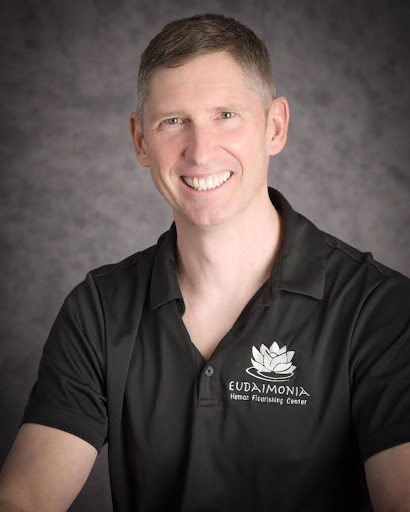Ionic Alliance Group Brings Terrain-Based Wound Healing to Market

When it comes to wounds that won't heal, medicine has long faced an expensive and frustrating problem. Chronic and 'untreatable' wounds, often seen in diabetics, post-surgical patients, and those battling infections, cost healthcare systems billions annually. With the global wound care market projected to exceed $30 billion in the next few years, the need for more effective solutions is only growing. Even the most advanced pharmaceutical wound treatments hover around 50% efficacy, leaving far too many patients without real solutions.
For Jasen Petersen, co-founder and CEO of Ionic Alliance Group, Inc. (IAG), that statistic is unacceptable. Petersen has developed Ion Biotechnology Aqueous Ligands (IBAL), a new class of therapeutic technology that he describes as a microimmune restorative. The origins of this technology trace back thousands of years to an indigenous tradition of applying mineral-rich compounds to treat infected wounds, a practice now refined into a precise, pharmaceutical-grade ion delivery system.

Unlike systemic supplements or pharmaceuticals, IBAL delivers essential ions, such as zinc, copper, magnesium, and sulfates, directly into the dysfunctional tissue environment. This precise delivery addresses what Petersen calls the 'Microimmune Fatigue Cycle,' where cells caught in a stalled healing phase lack the necessary cofactors to complete the process.
IBAL's primary mechanism is to deliver essential ions with a level of local bioavailability and concentration not previously achievable. This has two main implications. When applied to pathogens, the ion surge overwhelms and destroys them. When applied to stressed human cells, it meets their sharply increased local demand, enabling them to resolve the healing cycle more effectively.
In pathogens, copper attacks and destabilizes the cell wall, making it porous. This breach allows zinc and sulfates to flood in. Once inside, zinc disrupts critical enzymes, while sulfates interfere with core metabolic processes. IBAL has been tested against more than 35 different pathogens to date, including MRSA, A. baumannii, Candida, SARS-CoV-2, and Dengue, and has produced thorough destruction in every case, leaving no pathway for adaptation or resistance.
In contrast, when applied to stressed tissue, the same ion delivery meets the heightened local demand, with any excess dispersing harmlessly throughout the body at negligible concentrations. By satisfying this local need for essential ions, stressed cells regain the resources to perform their functions effectively. Ions such as zinc, copper, and magnesium are vital for enzyme activity, maintaining redox balance, and reducing oxidative stress, while preserving a strong yet balanced immune signal.
To appreciate the significance of IBAL's approach, it helps to understand Dr. Robert Naviaux's Cell Danger Response (CDR) model: a framework describing the body's built-in healing program. Whenever cells face stress from injury, infection, or toxins, they progress through the three healing phases: CDR1-Inflammation, to eliminate pathogens and signal neighbors; CDR2-Proliferation, to repair damaged tissue; and CDR3-Reintegration, to restore normal function.
Dr. Naviaux explains that different chronic diseases result from cells becoming trapped in specific healing phases: autoimmune diseases and chronic wounds in CDR1, proliferative diseases like cancer in CDR2, and degenerative disorders such as multiple sclerosis in CDR3. Petersen describes the underlying terrain failure that increases the likelihood of this stalled healing as Microimmune Collapse, the final stage of the Microimmune Fatigue Cycle, with localized nutrient deficiency as a major driver. IBAL's targeted ion delivery corrects that deficiency, helping cells advance through the healing cycle and resolve the root conditions that sustain chronic disease.
These stalled healing phases occur in a wide range of conditions, from chronic wounds to cancer to degenerative disease and age-related decline, representing hundreds of billions of dollars in annual global healthcare costs. "While IBAL's potential spans multiple therapeutic areas and could change how medicine treats any condition rooted in stalled healing, chronic wound care represents the most immediate and proven application," states Petersen.
This is why the first IBAL-based medical product, Ion Gel ZCM-25®, has been introduced in infection control and wound care, where it is approved in Mexico and the United Arab Emirates and has shown positive outcomes in approved markets. It is proving capable of helping resolve wounds where amputation was considered inevitable. "The beauty is that IBAL is toxic to pathogens at concentrations that are nutritive to our own cells," Petersen says. "We're giving the body what it needs, where it needs it."
This targeted approach makes the Ion Gel both highly effective and inherently safe for patients. "It's topical, locally applied, and works in harmony with the body's healing cycle," Petersen says. "We're not stimulating or suppressing the immune system. We're eliminating pathogens and restoring the local nutrient environment so the body can do what it's designed to do."
From a commercial standpoint, IAG has already proven market viability. The next major milestone for the company is securing FDA 510(k) clearance in the United States and obtaining the CE mark for European distribution for the Ion Gel. "We believe that our data is strong," Petersen says. "Now it's about scaling, expanding manufacturing, and making sure this is available everywhere it's needed."
With antibiotic resistance on the rise and treatment options narrowing, IAG's approach could arrive at a critical moment. The company positions IBAL not just as a product, but as the foundation of a new class of regenerative medicine, one that sidesteps resistance, avoids toxicity, and delivers results without long-term dependence.
© Copyright IBTimes 2025. All rights reserved.





















